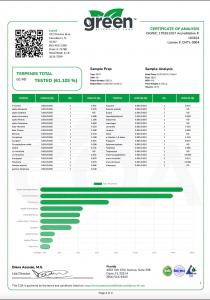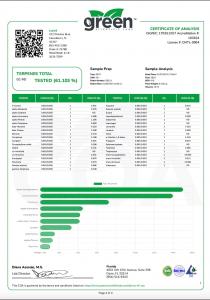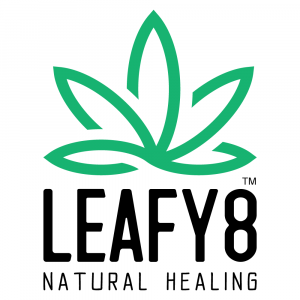Lab Result - Leafy8 Jack Herer Cannabis Derived Terpene Profile Leafy8: Central Florida's Delta-8, Delta-9 & HHC Brand Industry experts have step
Industry experts have stepped in to explain what terpenes are and where they come from.
CASSELBERRY, FLORIDA, UNITED STATES, February 5, 2023 /EINPresswire.com/ — First, let’s discuss the rise of synthetic terpenes.
Now that terpenes are all the rage, industry experts have seen a significant rise in synthetics and brands adding terps to their tinctures, oils, ointments, beverages, and edibles. There are even companies, like Altria (the tobacco giant behind Marlboro) working to capitalize on the wave by creating designer strains with specific terpene concentrations.
Unlike food purchased at a grocery store, which has standardized product labels, pages of reviews, and easily researched manufacturing info, there remain a number of unanswered and under-researched questions on cannabis & hemp additives and how they may or may not impact our health.
Here’s what experts know *so far* on the difference between synthetic and botanical (natural) terpenes, and what buyers should look for when choosing a product like Delta 8 based on terpenes.
Synthetic terpenes are manufactured in a laboratory setting to create “theoretically perfect” terpenes. Like other food artificial food additives, synthetic terpenes may be “food grade,” but they do not come from a plant.
Botanically-derived terpenes (BDTs) are naturally produced by plants to repel predators or seduce pollinators. They’re used widely in products like lavender lotions (linalool) and car air fresheners (pinene). Botanical terpenes extracted from plants other than cannabis are found in many cartridges, edibles and topicals, so those with an allergy to certain essential oils should make sure to check the label.
Cannabis-derived terpenes (CDTs) also fall in the botanical bucket. Technically, they’re the same, since the myrcene in mangoes is the same myrcene that’s found in cannabis. In analogous terms, consider how makers preserve terpene content by flash-freezing buds right at harvest. Like cold pressed juices they retain more beneficial compounds from the mother plant,but are also less common because of the costly methods to extract them (it takes a lot of good, hard grown bud to make a little bit of pure CDTs).
So if terpenes are naturally occurring, why would anyone go through the effort and costs to design their own?
Cannabis capitalism. The tobacco company Altria recently began making moves to patent designer strains with specific terpene concentrations that offer specialized flavor and aroma profiles. They hope these strains will create consistent nuanced entourage effects and associated therapeutic benefits that would make any marketing department giddy with glee.
How To Tell if Cannabis Derived Terpenes Are Genuine
Many vendors claim to offer cannabis derived terpenes (CDTs). However, due to the lack of regulation in this growing industry, it can be almost impossible to tell if the products are the genuine article. Botanical terps used in Delta 8 cartridges, edibles, and concentrates are typically made by mixing individual terpenes together to create a strain profile. That mean a set ratio of terpenes can be identified on the Certificate of Authenticity (COA) when the product undergoes pre-release lab testing if the manufacturer pays for terpene analysis on their sample.
There are over 400 naturally occurring terpenes in cannabis. The individual makeup of each strain is dependent on genetics and growing conditions. True CDTs used in Delta 8 and cannabis should contain a similarly rich mixture of terpenes, instead of just a four or five. This is how industry experts can tell the difference between BDTs and CDTs.
This means that the best way to tell if a vendor’s CDTs are genuine is to read the lab result that can be found by scanning the QR code affixed to the product label. Look for terpene analysis. A properly extracted and prepared CDT strain profile should indicate at least 10-20 different terpenes at uneven concentrations.
The above lab test for Leafy8’s Jack Herer cartridge depicts a Christmas tree of different terpenes. This is a clear example of a strain profile that has been extracted from cannabis.
The Final Word
Proceed with caution, especially with consuming synthetic terpenes which are often found in questionable products made with distillate or isolate.
While synthetic terpenes may end up being entirely safe, there is always a risk of health effects from synthetics and their chemical residues left behind. Unlike GMO foods, there’s currently no research on cannabis additives, and it’s still unknown how well synthetic and natural terpenes interact together and inside the body.
The technology is also still under development and many of the professionals behind it don’t yet fully understand botanical and synthetic terpenes. Until we have more answers, industry experts agree to seek out terpenes labeled as “whole plant”, “live resin”, “CDT”, which means that the content of the product is as close to the original cannabis plant as possible.
And when in doubt, ask.
Ask the budtender. Ask the dispensary. Ask the company who produces the product what they use – does it contain botanical or synthetic, or cannabis derived terpenes, and whether they’re adding other essential oils as well.
Whole plant products with all of the cannabinoids and terpenes intact are still the best bet, industry experts point out.
Someday cannabis will follow food, and there will come a point when brands are required to be more transparent and list all ingredients. Until then it falls in the buyer’s hands to set the standard and demand high quality, safe, transparent, and effective products by voting with their dollars.
Press Team
Leafy8 Delta 8, Delta 9, HHC & CBD Products
+1 855-453-2398
email us here
Visit us on social media:
Facebook
Instagram
![]()


